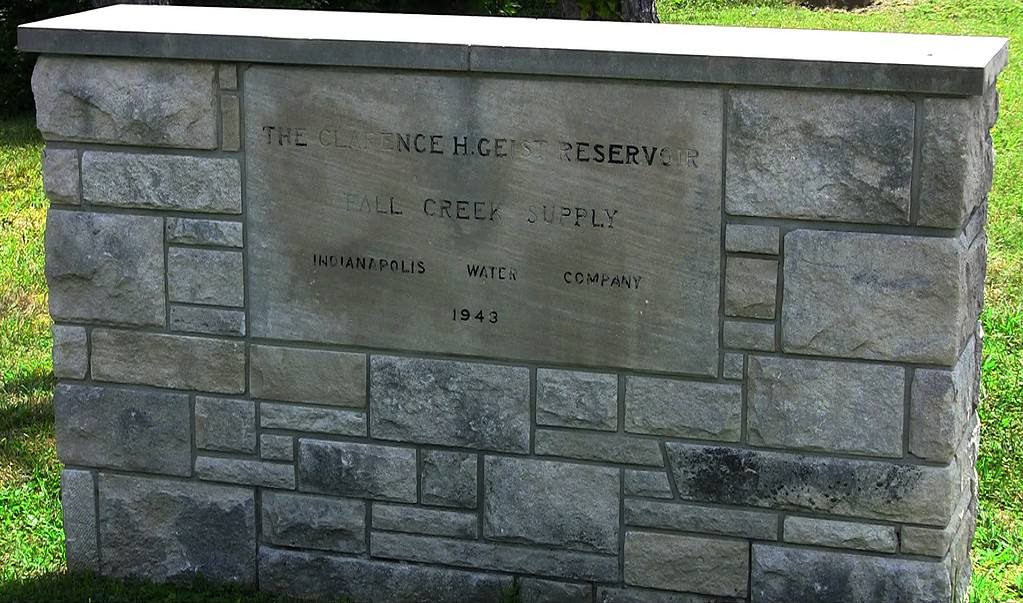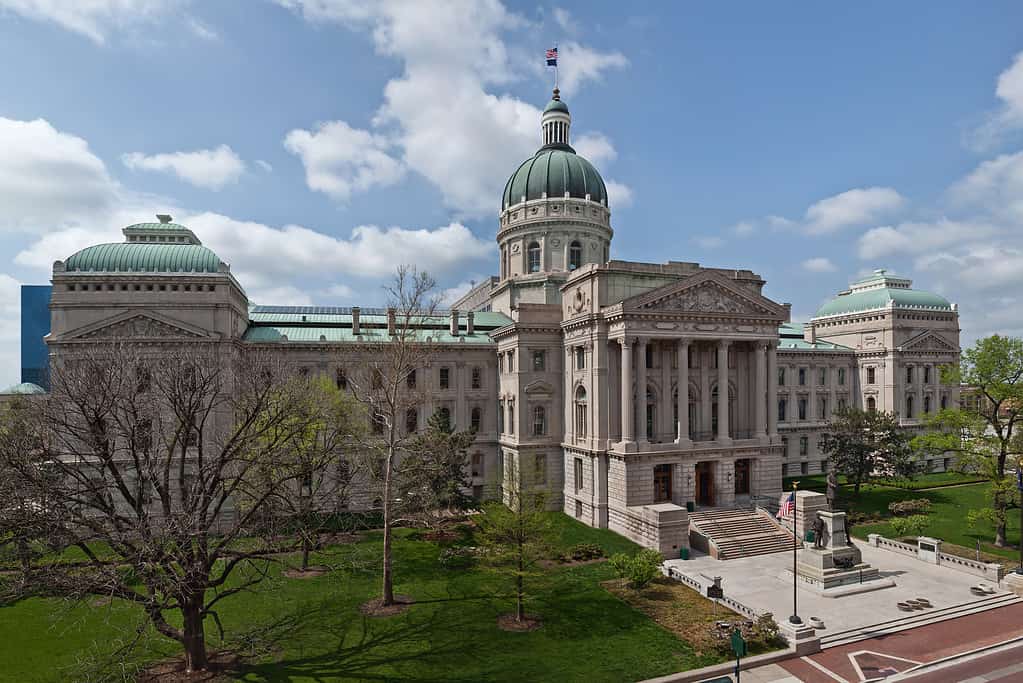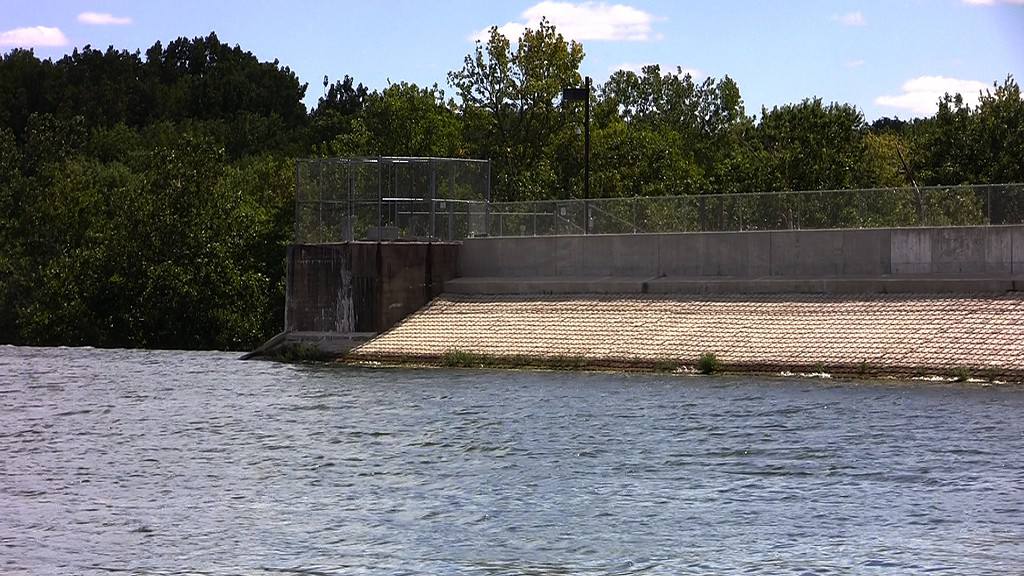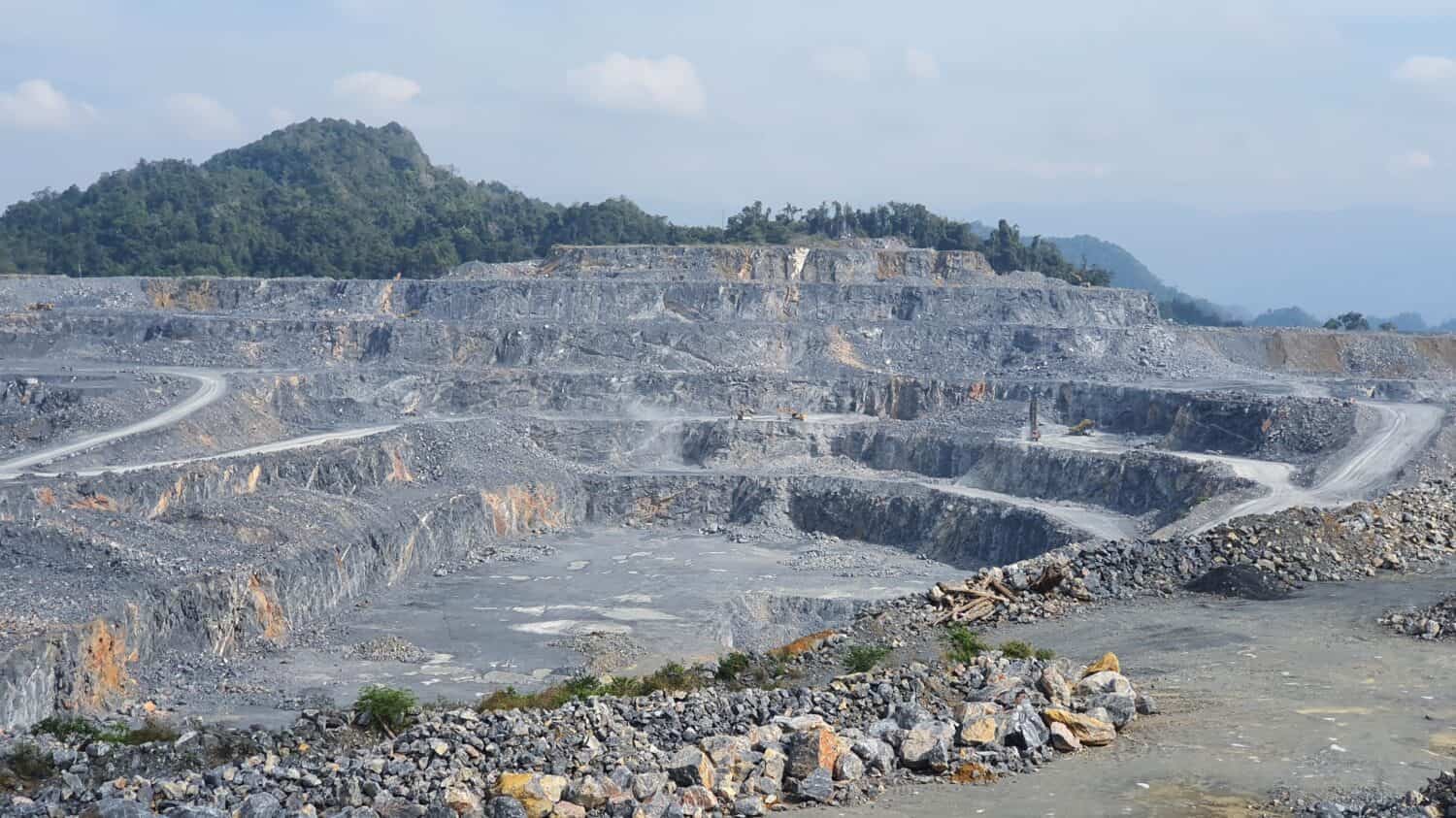It had been nearly 50 years since a new reservoir was built in Indiana. That all changed when the Hoosier State’s newest lake was completed in 2021. The story of this lake is a lesson in what can happen when necessity meets ingenuity.
Citizens Reservoir
Citizens Reservoir is the newest lake in Indiana. The reservoir’s construction was completed in 2020 and filled in early 2021. The lake sits adjacent to Geist Reservoir, which was constructed in the mid-1940s. The two reservoirs are located in Fishers, a northeastern suburb of Indianapolis.
The surface area of Citizens Reservoir covers 90 acres. The floor of the reservoir could hold both Lucas Oil Stadium (the home of the Indianapolis Colts and the state’s second-largest stadium) and Bankers Life Fieldhouse (the home of the Indiana Pacers and Indiana Fever).
With an average depth of approximately 230 feet (70.1 meters), the reservoir would cover over 80% of the Indiana State Soldiers and Sailors Monument on Monument Circle in downtown Indianapolis. The monument stands 284 feet tall.

Indiana’s newest lake would cover most of the Indiana State Soldiers and Sailors Monument in Indianapolis.
©Sean Pavone/ via Getty Images
Citizens Reservoir’s total volume is over three billion gallons. The manmade lake has the capacity to provide 100,000 central Indiana residents with a year’s supply of water.
Geist Reservoir sits less than 100 feet from the new lake. The older reservoir has a surface area of 1,800 acres. However, Geist Reservoir’s average depth is only ten feet, giving it a total volume of 6.3 billion gallons. Citizens Reservoir’s average depth is 23 times that of Geist Reservoir. Thanks to that impressive depth, Citizens Reservoir holds nearly half of the total volume of Geist Reservoir even though its surface area is 20 times smaller than the original reservoir.

Geist Reservoir’s surface area is 95% larger than Citizens Reservoir’s.
©Carol M. Highsmith / Public domain – License
History of Citizens Reservoir
The city of Indianapolis was founded in 1821. Today, it is the 16th most populous city in the nation and the third-most populous city in the Midwest, trailing only Chicago and Columbus, Ohio.
In 1913, a comprehensive study was launched to consider options to increase water supply for the burgeoning city and surrounding region of central Indiana. By the 1920s, it was determined that Fall Creek and White River would be insufficient to meet the demands of the projected population growth. An official recommendation was made to dam Fall Creek and create a reservoir.
Land acquisition and engineering plans lasted through the 1920s and 1930s. The dam was completed, and Geist Reservoir became operational in 1943.

Geist Reservoir was dedicated in 1943.
©Tom Britt / CC BY 2.0 – License
Limestone Mining
Irving Materials Incorporated (IMI) began mining operations near the reservoir in the 1950s. It is no surprise that a limestone mining operation was launched in this area. Indiana is rich with sedimentary rock resources. Bedford, which is located about 60 miles southwest of Indianapolis, is considered the Limestone Capital of the World. Indiana limestone was used to construct the Indiana Statehouse, the National Cathedral, the Pentagon, the United States Holocaust Memorial Museum, and the Empire State Building. State legislators designated Salem limestone as the official stone of Indiana in 1971.

Indiana limestone was used in the construction of the Indiana Statehouse.
©RudyBalasko/iStock via Getty Images
As IMI’s mining operations progressed, sections of the mine were retired. Those sections were then connected with Geist Reservoir to expand the footprint and capacity of the manmade lake.
Mining on the future site of Citizens Reservoir started in 1965. Plans to eventually use that quarry site for water storage began in the 1980s, though it would be nearly four decades before those plans would become a reality. Citizens Energy Group bought the quarry from Indianapolis in 2011, but IMI continued mining the site through 2019.
An original concept proposed cutting through the berm that separated Geist Reservoir from the now-retired quarry. However, it was determined that this would only net about 90 million gallons of additional water storage. Instead, an intake and outflow system was installed, which allowed the new reservoir to hold up to 3.2 billion gallons. Construction lasted through 2020, and the reservoir was filled and became operational in 2021.
Purpose of Citizens Reservoir
The lake was built and is maintained by Citizens Energy Group. On its website, the company describes itself as “a locally owned and operated utility service company, providing natural gas, thermal energy, water, and wastewater services to about 800,000 people and thousands of businesses in the Indianapolis area.”
Geist Reservoir was built to serve the water needs of Indianapolis residents in the mid-20th century. However, the 80-year-old reservoir’s supply became increasingly strained as central Indiana’s population grew and as weather patterns became increasingly unpredictable due to climate change. Citizens Energy Group sought to alleviate the added pressure on the growing city’s water infrastructure, and Citizens Reservoir does exactly that.
Indianapolis receives 42 inches of precipitation in an average year. In the past, during exceptionally rainy weather, Geist Reservoir overflowed its dam. The water that spilled out of the reservoir was lost to the city’s residents.

Prior to the opening of Citizens Reservoir, excess water would be lost over the spillway of the Geist Reservoir dam.
©Tom Britt / CC BY 2.0 – License
Then, when the weather swung to the other extreme and became extraordinarily dry, Geist Reservoir showed the effects of too much output and not enough inflow. The water from the previous excess rains would have been quite an asset in those situations, but it was lost because Geist Reservoir didn’t have the capacity to hold it.
An Innovative Solution
Citizens Reservoir provided a solution to the issues presented in both wet and dry weather. The new lake collects excess water from the Geist Reservoir during rainy conditions. In turn, it provides an additional 3.2 billion gallons of water for residents of central Indiana during prolonged dry spells. Water demand spikes during dry weather. Along with their normal water usage, customers also begin using water in other ways, such as watering their lawns. That places a much greater strain on the municipal water supply than many realize.
As noted earlier, a sophisticated intake system was installed to fill the new reservoir. The system uses gravity to force excess water from Geist Reservoir through seven-foot-wide intake shafts into the adjacent Citizens Reservoir. The intake system, which is controlled with slide gates and screens, can move up to 100 million gallons of water per day. This allows billions of gallons of water that would have previously been lost to be collected and saved for use during drought conditions.
When those dry periods arrive, a pump system on the opposite side of the lake can move up to 30 million gallons of water per day from Citizens Reservoir back into Geist Reservoir. That water will then flow downstream to two different treatment plants. From there, it is distributed to hundreds of thousands of customers. Indiana’s newest lake is expected to meet the water demands of the region for at least the next twenty years.
A Cost-Effective and Environmentally-Friendly Strategy
Geist Reservoir was built by damming Fall Creek. To create a reservoir using that method today would cost somewhere in the neighborhood of $600 million. Converting the retired limestone quarry into a reservoir cost about $30 million, a 95% savings over the traditional alternative.
Not only that, but unlike damming a creek or river, this reservoir was built with minimal environmental disruption. Before the reservoir was built, it received a thumbs-up from Tim Maloney, senior policy director for the Hoosier Environmental Council. He told the Indianapolis Star, “We think it is a good move by Citizens, and we don’t see any negative environmental impacts. It is a reasonable use of an existing quarry.”

Converting a limestone quarry into a lake is far less expensive than building a traditional reservoir.
©Parmna/Shutterstock.com
Recreational Use of Citizens Reservoir
Indiana’s newest lake is designed solely for water storage. There is no public access for boating, fishing, or other recreational activities.
However, Geist Reservoir remains a favorite among outdoor enthusiasts in central Indiana. The lake is a popular destination for boating, water skiing, canoeing, kayaking, and swimming.
Geist Reservoir is also a fantastic fishery, featuring healthy populations of largemouth bass, striped bass, channel catfish, flathead catfish, black crappie, walleye, bluegill, and redear sunfish.
So, while Indiana’s newest lake is not open to the public, the large reservoir next door is one of the most popular destinations for water recreation in the state.
The photo featured at the top of this post is © iStock.com/Oleksii Liskonih
Thank you for reading! Have some feedback for us? Contact the AZ Animals editorial team.






